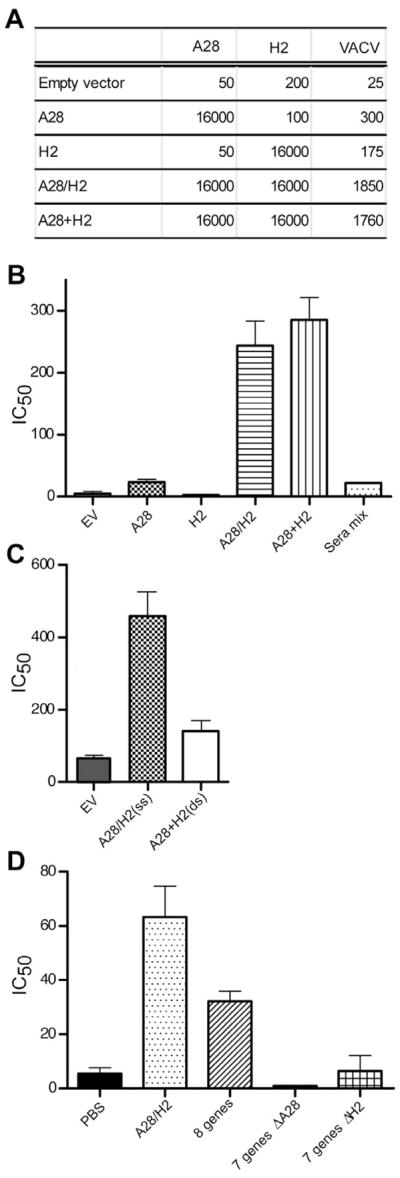Fig. 3.

Induction of binding and neutralizing antibodies. (A) ELISA assays. Sera obtained after the fourth DNA immunization (corresponding to Fig. 2C) were pooled and assayed by ELISA. The DNA used for immunization is indicated on the left and the immobilized protein (A28 or H2) or intact virions (VACV) on the top. A28/H2 refers to plasmids attached to the same beads and A28 + H2 refers to mixtures of beads containing A28 and beads containing H2. (B) Neutralization titers after same-site injections. The sera used in panel A were tested by flow cytometry for ability to neutralize recombinant VACV expressing GFP. Sera mix refers to mixing equal volumes of sera from mice immunized with A28 DNA alone and with H2 alone. The data for all samples except the sera mix are the averages from 4 independent assays, each done in duplicate. Error bars are shown. The sera mix was done once in duplicate. (C) Comparison of neutralization titers after same and different site immunizations. Immunizations were as described in Fig. 2C except that some received A28 and H2 in the same site (ss) and others in different abdominal sites (ds). The assay was performed twice each time in duplicate and averages with error bars are shown. (D) Neutralization titers after multi-gene immunizations. Mice were immunized with 0.5 μg of each A28/H2, mixture of all eight plasmids, or seven gene combinations that excluded A28 or H2. Averages of three assays, one which was done in duplicate are shown with error bars.
